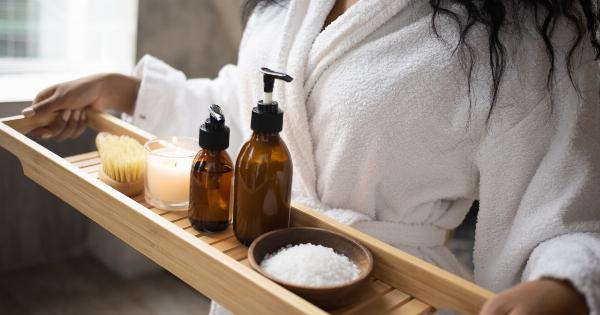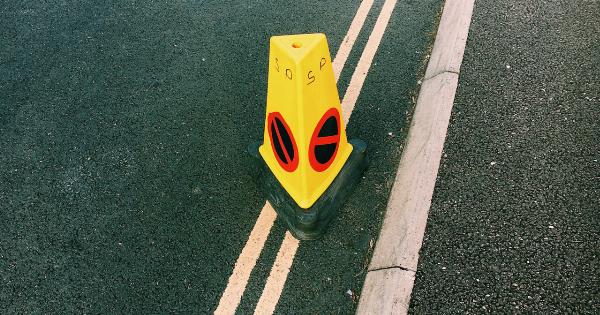Finger cramps can be an uncomfortable and sometimes painful sensation that affects people of all ages. They can occur for a variety of reasons, from overuse of the fingers to underlying medical conditions.
In this article, we will explore some fascinating facts about finger cramps, their causes, and potential remedies.
1. What Are Finger Cramps?
Finger cramps are involuntary muscle contractions that cause sudden and intense pain or discomfort in the fingers. These cramps can affect a specific finger or multiple fingers at once.
They often occur suddenly and can last anywhere from a few seconds to several minutes.
2. Common Symptoms
When experiencing finger cramps, individuals may feel a tight and knotted sensation in their fingers. The affected fingers may also become stiff, making it difficult to move or perform everyday tasks.
In some cases, the cramps may even cause the fingers to curl or lock into a particular position temporarily.
3. Causes of Finger Cramps
There are several potential causes of finger cramps, including:.
- Overuse: Using the fingers excessively, such as during typing or playing musical instruments, can strain the muscles and lead to cramping.
- Dehydration: Insufficient water intake can lead to electrolyte imbalances, which can trigger muscle cramps, including those in the fingers.
- Nutritional deficiencies: A lack of certain minerals, such as potassium, magnesium, or calcium, can contribute to muscle cramps, including those in the fingers.
- Medical conditions: Underlying medical conditions like peripheral artery disease, nerve compression, or diabetes can increase the likelihood of experiencing finger cramps.
- Injuries: Finger cramps can also occur as a result of injuries to the muscles or tendons in the fingers.
4. Risk Factors for Finger Cramps
While anyone can experience finger cramps, certain factors may increase the risk of developing them:.
- Age: Older adults are more prone to muscle cramps, including those in the fingers.
- Pregnancy: Hormonal changes during pregnancy can make women more susceptible to finger cramps.
- Medical conditions: Individuals with certain medical conditions, such as diabetes or nerve-related disorders, are at a higher risk of experiencing finger cramps.
- Occupation: People who perform repetitive finger movements, such as musicians or office workers who type for extended periods, are more likely to develop finger cramps.
5. Treatments for Finger Cramps
If you experience finger cramps, there are several steps you can take to alleviate the discomfort:.
- Stretching exercises: Gentle stretching exercises for the fingers and hands can help relieve muscle tension and reduce the frequency of cramps.
- Warm compresses: Applying a warm compress to the affected fingers can help relax the muscles and alleviate cramping.
- Hydration: Staying properly hydrated can help prevent electrolyte imbalances that contribute to finger cramps.
- Dietary changes: Eating a balanced diet rich in essential minerals can help reduce the likelihood of muscle cramps.
- Over-the-counter pain relievers: Nonsteroidal anti-inflammatory drugs (NSAIDs) can provide temporary relief from finger cramps.
6. When to Seek Medical Attention
In most cases, finger cramps are harmless and resolve on their own or with simple self-care measures. However, it is advisable to seek medical attention if you experience any of the following:.
- Frequent or severe cramps: If you frequently experience severe finger cramps that interfere with your daily activities, consult a healthcare professional.
- Prolonged cramps: If your cramps last longer than expected or do not seem to improve with self-care measures, it is recommended to seek medical advice.
- Accompanying symptoms: If your finger cramps are accompanied by other concerning symptoms, such as numbness, tingling, or weakness, consult a healthcare professional for evaluation.
7. Prevention Tips
While it may not be possible to prevent all instances of finger cramps, the following tips may help reduce their occurrence:.
- Stay hydrated: Drink an adequate amount of water throughout the day to maintain proper hydration.
- Eat a balanced diet: Consume foods rich in essential minerals, such as bananas, spinach, almonds, and dairy products, to prevent nutritional deficiencies.
- Rest and stretch: Take regular breaks and perform stretching exercises to prevent overuse and muscle fatigue.
- Maintain proper ergonomics: Ensure that your workspace setup and daily activities promote good posture and minimize strain on the fingers and hands.
- Consult a healthcare professional: If you have underlying medical conditions that increase the risk of finger cramps, discuss preventive strategies with your doctor.
8. Interesting Facts About Finger Cramps
Here are some interesting facts about finger cramps:.
- Nocturnal cramps: Finger cramps can occur at any time, but they are more commonly experienced during nighttime.
- Common among athletes: Athletes who use their hands frequently, such as climbers or weightlifters, are more likely to experience finger cramps due to excessive strain on the fingers.
- Grip strength: Finger cramps can temporarily affect grip strength, making it difficult to hold objects firmly.
- Nutritional imbalances: In addition to dehydration, imbalances in essential minerals like calcium, potassium, and magnesium can trigger finger cramps.
- Temporary muscle dysfunction: Finger cramps can cause temporary muscle dysfunction, making it challenging to perform delicate tasks that require fine motor skills.
9. Fascinating Remedies
While there is no foolproof remedy for finger cramps, some fascinating options to relieve discomfort include:.
- Acupuncture: Acupuncture, an ancient practice of inserting fine needles at specific points in the body, may help alleviate finger cramps by promoting muscle relaxation.
- Warm mustard oil: Massaging the affected fingers with warm mustard oil can provide relief from finger cramps.
- Aromatherapy: Certain essential oils, such as lavender or chamomile, may help relax muscles when applied topically to the fingers.
- Hydrotherapy: Alternating between warm and cold water baths for the hands may improve blood circulation and reduce the frequency of finger cramps.
10. Conclusion
Finger cramps can be a bothersome condition, but they are generally harmless and can often be managed with self-care measures.
Understanding the causes, risk factors, and available remedies can help individuals effectively prevent and address these cramps. Remember, consulting a healthcare professional is essential if you experience severe or persistent finger cramps, as they can help determine the underlying cause and provide appropriate treatment.































